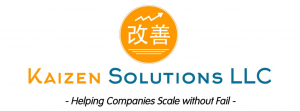The EOS Model® provides a useful foundation for businesses, but it falls short in addressing key aspects of creating an growth. By incorporating additional elements from the Gravitas 7 Attributes of Agile Growth® model, businesses can create a more comprehensive system that promotes growth while maintaining smooth operations. Focusing on Leadership, Strategy, Execution, Customer, Profit, Systems, and Talent, the 7 Attributes of Agile Growth® offer a more encompassing approach to achieving success.

Understanding and Optimizing Your Cash Conversion Cycle
Many companies struggle with understanding their Cash Conversion Cycle and how it impacts their growth. The Cash Conversion Cycle is the time taken from when you first engage with a potential client to being paid for the work you do or the product you deliver. Companies need cash to fund growth, and profit is not the same as cash flow. A longer Cash Conversion Cycle requires more cash for growth and external sources, which may not always be available at economically viable rates.
Components of the Cash Conversion Cycle
The Cash Conversion Cycle can be broken down into four components: Sales Cycle, Make/Production & Inventory Cycle, Delivery Cycle, and Billing and Payments Cycle. Each component varies in duration for different companies and industries. For example, Company X might have a 120-day Cash Conversion Cycle comprising 40 days for Sales, 30 days for Make/Production and Inventory, 5 days for Delivery, and 45 days for Billing and Payments. The challenge is to reduce the length of the cycle.
Three Ways to Improve the Cash Conversion Cycle
- Eliminate Mistakes: The easiest way to improve your Cash Conversion Cycle is by identifying and rectifying mistakes that lead to delays in each component of the cycle. Work with your team to pinpoint the most significant errors and implement a program to reduce them. Measure your cycles and errors to minimize delays in your Cash Conversion Cycle.
- Shorten Cycle Times: Investigate cycle times and underlying processes for improvement opportunities. This step is slightly more complex, as it requires reevaluating your existing processes and asking deeper questions. Tom Wujec’s “How to Make Toast” exercise can help visualize the process, break it down into manageable steps, and identify areas of improvement. See below.
- Improve Business Model: The final method to enhance your Cash Conversion Cycle involves refining your business model. Look for ways to optimize each component of the cycle by eliminating inefficiencies and streamlining processes.
Understanding and optimizing your Cash Conversion Cycle is crucial for business growth. By focusing on eliminating mistakes, shortening cycle times, and improving your business model, you can reduce the time it takes to convert your efforts into cash and, ultimately, fuel your company’s growth.
Asking the Right Questions: Challenging the Status Quo
Another way to improve cycle times is by questioning the existing method and exploring alternative approaches. This process can be challenging due to built-in biases but can lead to significant improvements with the help of a skilled facilitator.
Using the 5 Whys Technique
The 5 Whys technique is powerful in identifying the root cause of problems, understanding process relationships, and eliminating assumptions or biases. This method is highly effective without the need for complicated evaluation techniques.
Improving the Business Model: A Challenging but Rewarding Approach
The most challenging but potentially most rewarding method to improve the Cash Conversion Cycle is reevaluating and adjusting your business model. A famous example of this approach is Dell Computers, which dramatically improved its cycle by adopting a build-to-order model. This section will further explain how Dell achieved a reduction in its Cash Conversion Cycle through strategic changes in its business model.
Dell’s Transformation: The Build-to-Order Model
Dell Computers decided to manufacture computers only when customers placed orders. Doing so shifted their business model from a traditional inventory-based approach to a customer-centric, build-to-order model. This change led to significant improvements in each component of their Cash Conversion Cycle, as outlined below:
-
Sales Cycle: As customers customized their computers during the ordering process, Dell was able to streamline its sales cycle. The company no longer needed to carry a wide range of pre-built computers, enabling them to better target their marketing and sales efforts.
-
Make/Production & Inventory Cycle: Dell’s build-to-order model significantly reduced the need for finished inventory. They only had to maintain a minimal level of inventory for components required for custom orders. This approach also reduced the risk of obsolete inventory, as Dell only purchased components in response to specific orders.
-
Delivery Cycle: By having customers pay for their computers when placing orders, the delivery cycle’s impact on the Cash Conversion Cycle became less significant. Dell could focus on efficient production and timely delivery without worrying about the cash tied up in finished goods.
-
Billing and Payments Cycle: With customers paying upfront for their orders, Dell eliminated the need for a lengthy billing and payments cycle. The company received cash from sales before starting production, freeing up working capital and reducing the time it took to collect payment.
The Result: A Negative Cash Conversion Cycle
As a result of these strategic changes in their business model, Dell reduced its Cash Conversion Cycle from 63 days to an impressive -39 days. This negative cycle meant that Dell effectively used its customers’ cash to fund its growth, eliminating the need for external financing and improving overall cash flow.
Dell’s success story exemplifies the potential benefits of rethinking your business model to improve the Cash Conversion Cycle. By identifying areas of inefficiency in your current model and exploring innovative alternatives, you can significantly reduce your reliance on external financing sources and drive sustainable growth.
However, it’s essential to keep in mind that the right approach for your business may differ from that of Dell or others. The key is to analyze your unique situation, understand the challenges specific to your industry, and find innovative solutions that best align with your company’s goals and resources.
Are You Optimizing Your Cash Conversion Cycle?
Understanding and optimizing your Cash Conversion Cycle can reduce your reliance on bank lines of credit and other debt sources. If you need help determining your cycle and shortening it, consider reaching out to a professional for guidance.
Copyright (c) 2021, Marc A Borrelli
Recent Posts
EOS is just that, an Operating System
What has COVID done to Company Culture?
COVID has affected everyone. However, companies need to examine if they have lived their core values during COVID, how they are reinforcing them in a WFH environment, and especially with the onboarding of new hires.
Profit ≠ Cash Flow
Knowing how much cash you generate is essential for planning for growth. Too many companies don’t know and when they grow they find they are continually running out of cash. Understand your cash flow generation and how to improve it through improvements in your Cash Conversion Cycle and using the Power of One.
What Are Your Critical and Counter Critical Numbers?
The key to achieving long term goals is to define short term goals that lead you there. Focusing those short term goals around a key metric is essential. However, ensure that the metric will not lead other areas astray by having an appropriate counter critical metric act as a counter balance.
Rethinking ‘Family’ Culture in Business: Fostering Performance and Success
Explore the importance of company culture and the potential pitfalls of adopting a “Family” culture in organizations. Learn how to foster a high-performance culture while maintaining key family values and discover success factors for family businesses. Rethink the “Family” culture concept and create a thriving environment for your organization.
Do You Truly Know Your Core Customer?
Knowing the profit of your core customers is key to building a growth model. Many companies have identified core customers that are generating a sub-optimal profit and so they cannot realize the profits they seek. Identifying the correct core customer allows you to generate profits and often operate in “Blue Ocean.”
The Spectacular Rise and Fall of the European Super League
The European Super League (ESL) collapsed within 48 hours of its announcement due to hubris, a lack of value creation, and fan backlash. The founders’ arrogance led them to disregard European football’s deep-rooted traditions and culture. At the same time, the focus on wealthy club owners instead of merit undermined the essence of the competition. The fierce backlash from fans, who felt betrayed by their clubs, demonstrated the importance of prioritizing supporters’ interests in football.
When Should I Sell My Business?
Many business owners want to sell at the top of the market. However, market timing is tough. Is this the best strategy? Probably not.
Does Your Financial Model Drive Growth?
Working with many companies looking to grow, I am always surprised how many have not built a financial model that drives growth. I have mentioned before a financial model that drives growth? Here I am basing on Jim Collin's Profit/X, which he laid out in Good to...
COVID = Caught Inside
As we emerge from COVID, the current employment environment makes me think of a surfing concept: “Being Caught Inside When a Big Set Comes Through.” Basically, the phrase refers to when you paddle like crazy to escape the crash of one wave, only to find that the next wave in the set is even bigger—and you’re exhausted. 2020 was the first wave, leaving us tired and low. But looking forward, there are major challenges looming on the horizon as business picks up in 2021. You are already asking a lot of your employees, who are working flat out and dealing with stress until you are able to hire more. But everyone is looking for employees right now, and hiring and retention for your organization is growing more difficult.













